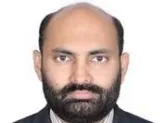UAE’s diversified approach to tackle challenge of power demand
By Ehtesham UddinThe UAE continues to enjoy double digit real annual GDP growth rates, nearly of 10 percent, but facing a challenging task to quench the thirst of power demand.
It is estimated that this fast pace of economic development will result as threefold increase in electricity demand by year 2020, requiring the installation of colossal amount of new generation capacity. Keeping pace with this demand represents a challenge that requires consideration of every viable option.
Currently , power industry is totally dependent on gas fired dual purpose power plants, that produces power and water in combine cycle co-gen environment, as this part of land lacks in fresh water natural resources.
Country has adopted a diversified approach to tackle this challenging task and keep abreast in development arena. Firstly, experts observed the abundant crude oil reserves held by the UAE and have suggested to simply burn crude oil to generate needed electricity.
Technically it looks feasible, however it would result in a dramatic loss of export revenue for the country, as well as a proportionate reduction in the amount of crude oil it could supply to the global economy.
Therefore, While assessing its options for meeting future electricity demand, a comprehensive list of possibilities have been evaluated in addition to nuclear energy, including natural gas-fired power plants, crude oil-fired power plants, and coal fired power plants, as well as alternative and renewable technologies such as solar, and wind.
Certainly, the more interesting conclusion arising from UAE analysis is the degree to which these technologies can complement each other in reducing the overall emissions of the country’s electricity sector.
Comparisons between these technologies revealed the benefits of nuclear energy as a cost-competitive and environment friendly form of base-load power generation.
Cost advantages of nuclear energy over existing alternative and renewable energy technologies is proven, the reality is that renewable technologies do not compete for the same role, owing to the fact that the latter are not base-load technologies., underlining the fact that the UAE’s future energy portfolio is likely to feature fossil fuel, nuclear, alternative, and renewable technologies, as well as focus on demand-side management to increase efficiency.
Having a generation mix of renewable up to the extent of 7% of its load requirement by year 2020, is a governmental vision and entire power sector is geared to take up this initiative.
Shams One, the First grid scale (CSP) concentrated solar power plant (400 MW capacity when completed), is under commissioning in these days and by start of this summer 100 MW will be available through this source.
IPP structure of this renewable power company encouraging private investors and government policies also providing full support in this regards. 100 MW Noor (PV) photovoltaic solar plant and wind farm at sir baniyass island are upcoming projects in renewable generations.
UAE is also an active partner in GCC wide interconnector that connect all six gulf states and thus open up a new horizon of cooperation and reaping the benefits of common resources. Smart grid techniques and demand side management plans are also on card as tools in this diversified approach.




















 Advertise
Advertise







